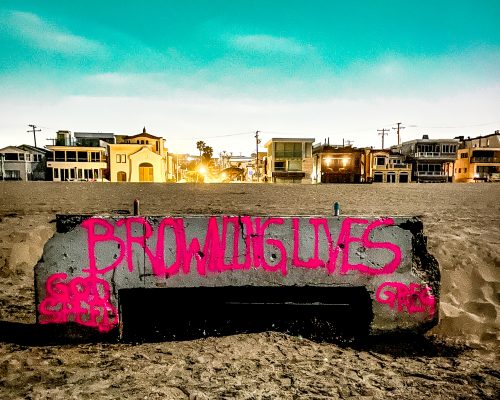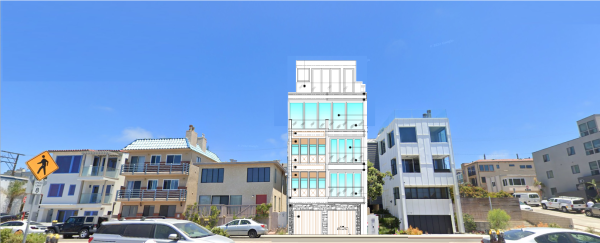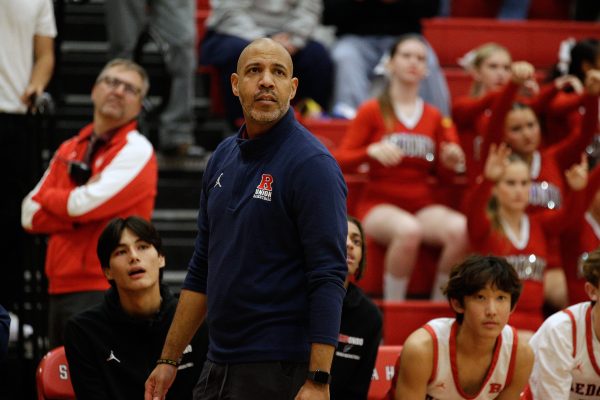
As public discussions of the Redondo Beach power plant go, this one was brief.
The City Council focused its attention on the agenda item at 7:15 Tuesday night, and by 8 p.m. had reached a unanimous decision: to impose a temporary moratorium on the construction of any power generating facility within the city’s coastal zone, or between PCH and the Pacific Ocean.
The idea is to block energy company AES from proceeding with its plan to repower the Harbor Drive plant. Despite its disagreements over which is the right approach, the council agrees that, as Mayor Steve Aspel said Tuesday night, “Redondo would be a better place without a power plant.”
The moratorium will be effective for 45 days, but the council can vote to extend it. Prepared by city staff and Ventura-based firm Rincon Consultants, the interim ordinance forbids the city from approving any conditional use permit, coastal development permit, or any other discretionary permit for the construction, modification, or alteration of an electricity-generating facility along the coast.
It represents a way for the council to articulate to the California Energy Commission (CEC) – the state body presently considering AES’ application to reconstruct – its belief that the plant poses “a current and immediate threat to the public health, safety or welfare,” according to a report prepared by city staff.
For months, the council has been pushing the CEC to perform a needs analysis – a study of whether retiring the Redondo Beach plant will in fact deprive the West Los Angeles Basin of reliable power or whether the grid can obtain its supply elsewhere – before making a decision about whether or not to permit AES’ proposed project.
“If the commission and state of California deem the power necessary, then for better or for worse the citizens will live with it,” Aspel told a panel of CEC representatives at a public hearing in October. “But we want to make sure there’s a needs analysis and you deem the power vital to the grid.”
By law, the CEC is not obligated to perform a needs analysis. However, it is required to conduct the study if it finds that AES’ proposal clashes with a local law or ordinance – some kind of roadblock, like the moratorium imposed Tuesday night.
“This is obviously an important next step,” District 2 Councilmember Bill Brand said of the moratorium. “[The] CEC has said they statutorily cannot do a needs analysis unless there is a conflict. If we don’t get a needs analysis they can get a contract without proving that they need the power.”
“We are not sure that the Energy Commission will find the moratorium a conflict,” City Attorney Mike Webb pointed out Tuesday night, “but we think they will.”
The council has been debating the presence of the power plant for a decade, and seriously discussing the possibility of a moratorium on construction since March. In April, it passed a resolution formally opposing AES’ proposal to repower and asking AES to find alternative uses for its 50-acre property.
The council’s position is this: there was a time when locating the power plant in Redondo Beach made sense, but that time has passed.
“The California Coastal Act was enacted in 1976 to protect and preserve the California Coastal Zone as an environmental, recreational and economic resource for the benefit of all Californians,” reads the ordinance document prepared by city staff and Rincon Consultants. “Under the Act, industrial uses, including electrical power generating facilities, are discouraged unless the use is coastal dependent, meaning that the use requires a location on or near the ocean in order to be able to function, or where the use is directly supportive of other coastal-related uses, such as fishing or boating.”
In other words, the Redondo Beach power plant was built near the sea because at the time it used ocean water to cool its hot turbines. But in 2010, state authorities outlawed that practice, which forced AES to redevelop its plant accordingly. It is no longer necessary, the council agrees, for the power plant to be located in a coastal area.
But AES has said all along that its proposed plant will comply with all state standards, and that it will be 60 percent smaller and 50 percent more efficient.
Its lawyers at Ellison, Schneider & Harris find the moratorium enacted by the City Council this week to be flawed.
“In summary, the draft IS/ND [initial study/negative declaration, which imposes the moratorium] is defective on numerous substantive and procedural grounds,” they wrote in a letter. “The draft IS/ND exceeds the legal authority of the City, attempts to usurp the lead agency role of the California Energy Commission, has been issued before the essential details of the proposed Project have been disclosed, and fails to adequately disclose the significant adverse impacts of the proposed Project. The IS/ND should be withdrawn… Alternatively… the City may consider adoption of the ordinance only after the California Energy Commission has completed its environmental review of the RBEP [Redondo Beach Energy Project, or AES’ proposed project.”
The council also voted unanimously Tuesday night to earmark another $350,000 for its continued engagement at the highest level in the CEC’s decision-making process. The money will go toward hiring attorneys to alleviate some of the city attorney’s workload, the bulk of which presently relates to the power plant.
On Thursday, Dec. 5, the CEC is holding another public workshop and inviting residents to weigh in on the AES project from 3 p.m. at Crowne Plaza. City Attorney Mike Webb has said the moratorium will be presented to the CEC during the meeting.
For more information about the meeting, contact the CEC’s Public Adviser’s Office by phone at either (916) 654-4489 or (800) 822-6288, or by email at publicadviser@energy.ca.gov.








